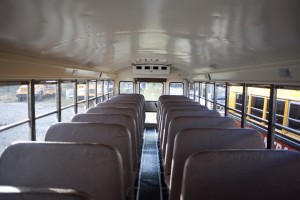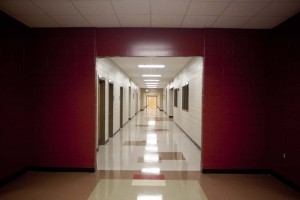
The author easily smuggled these replica firearms through an improperly run metal detection checkpoint during a security assessment of a high-rise school board office building. He could have just as easily carried these items through every metal detection checkpoint he passed through in Washington D.C. last week.
Tempting Targets for Terrorists
I decided to stay over in Washington D.C. for the weekend after my keynote session at the National Campus Safety Forum on Friday. There is always much to do and see in our nation’s capitol and I decided to spend some time visiting some of the city’s awesome attractions. I could not fail to notice that the way metal detectors are utilized to protect the millions of visitors to many of these high profile venues is troubling. As was the case when I visited some of the same sites last summer, it was readily apparent to me that the entry point metal detection approach used at each of the venues would not stop them from entering with not only one, but if they desired, several firearms and a large quantity of ammunition. More importantly, my experience has been that it would be obvious to any reasonably intelligent aggressor that they could easily carry weapons through these same checkpoints. This struck a cord as the problems I observed related directly to my keynote topic for the Campus Safety Forum.
Like some other tourist attractions I have visited in other cities, the weapons screening checkpoints provide only a façade of weapons screening. For example, I was able to clear the weapons screening checkpoint at one site while carrying two umbrellas, a portable phone and several other metallic objects that set off the detector. But like other patrons who had waited for half an hour in the rain to pass through the detectors, no effort was made to determine what metal objects I had on my person. I observed a number of parents being instructed to push baby strollers through the detectors as well as other blatant breaches of proper entry point weapons screening. An obvious cue that a metal detector checkpoint is not even remotely effective is when security personnel are not using handheld wands to conduct the secondary screening that is required to determine what metal objects have triggered the detector. Almost every person I observed passing through the walk through units set off the detectors, yet no additional screening was taking place.
Terrorism Warnings and Public Trust
As we have seen in many instances, attackers have not had any trouble figuring out that they can smuggle firearms, knives and other weapons through these types of checkpoints. Setting up and operating ineffective checkpoints involves either a serious lack of security expertise or more commonly, a conscious decision to put on an illusionary show of security with knowledge that people are not really being properly protected. Such efforts also play well into the hands of terrorists and other types of attackers who plan attacks on places where people gather in large numbers. For example, terrorists have often reveled in the opportunity to demonstrate government incompetence in protecting civilian populations. For most K12 schools, implications for civil liability are enormous. Whether the security approach involves dummy security cameras or woefully ineffective weapons screening checkpoints, intentionally presenting a false sense of security can be very problematic during the litigation following an act of violence. High levels of concern relating to the potential for terrorism in Washington D.C. have been expressed by numerous government agency heads. The potential for loss of life followed by a significant loss of public confidence should be a very real concern.
Deliver the Security that you Promise
Having extensive experience with entry point weapons screening for venues as large as the 2001 Winter Olympic Games, I understand that effective entry point screening for these venues would be extremely expensive and would create severe backlogs of patrons waiting to be screened. For the same reason, many K12 schools have opted not utilize this approach. We have a moral and, in many cases, legal obligation not to mislead people with illusions of security that are severely out of sync with reality. If you cannot achieve a reasonable level of deterrence through appropriate security measures, it is often best not to employ them in the first place.

